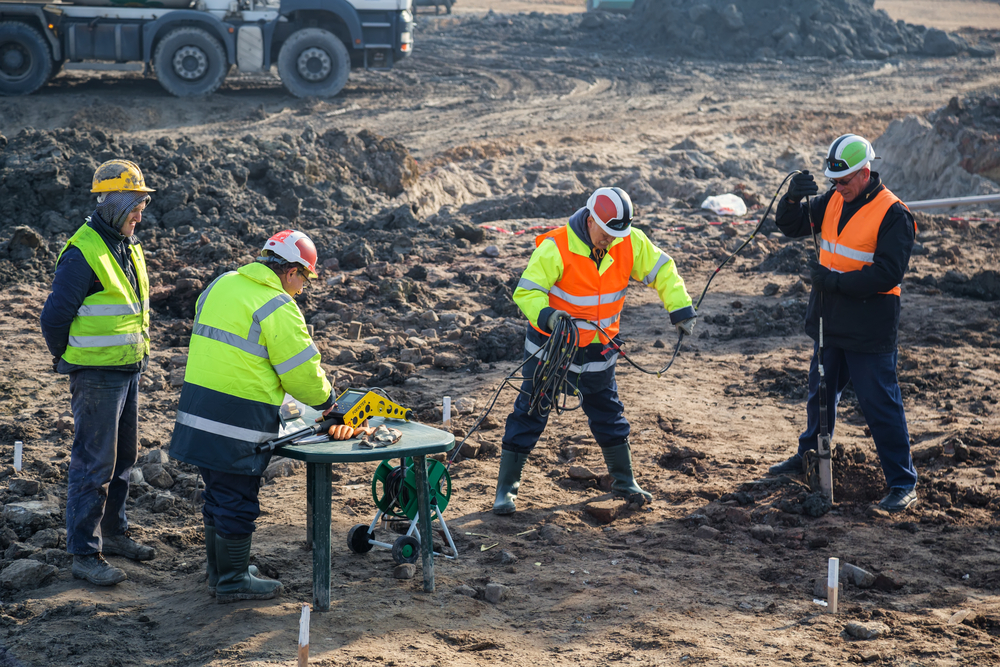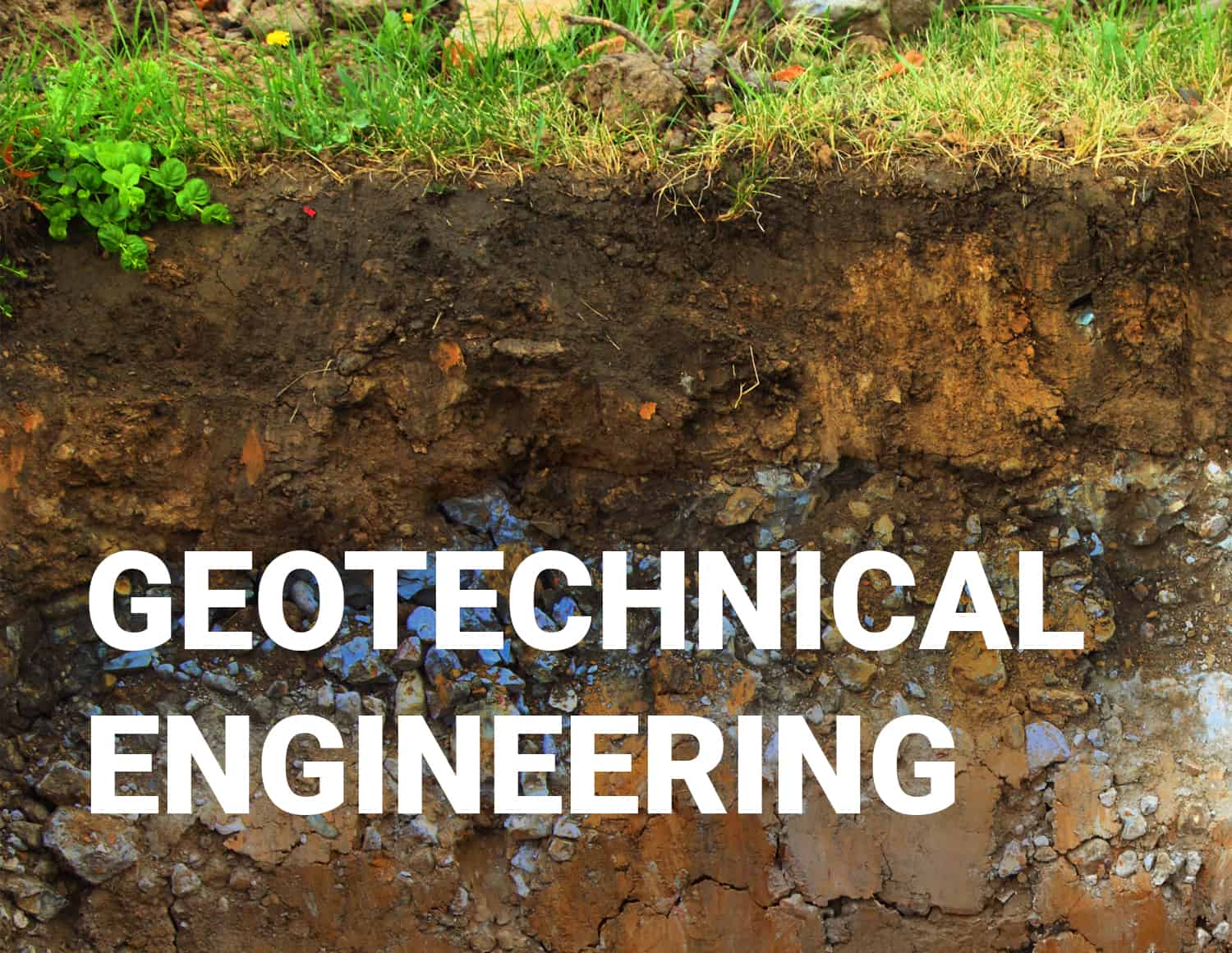Everything You Need to Know About Geotechnical Engineering for Your Next Task
Everything You Need to Know About Geotechnical Engineering for Your Next Task
Blog Article
Discovering the Fundamental Concepts and Applications of Geotechnical Design for Lasting Framework Advancement
The intersection of geotechnical design and sustainable facilities development offers a compelling chance to enhance both layout efficiency and environmental duty. By understanding essential principles such as soil mechanics, website characterization, and foundation design approaches, engineers can create services that are not only effective yet also decrease environmental footprints.
Trick Concepts of Geotechnical Engineering
Comprehending the crucial principles of geotechnical design is important for developing sustainable facilities (about geotechnical engineering). This self-control concentrates on the communication in between soil, rock, and structures, playing an important function in the security and efficiency of design projects. The foremost concept is the assessment of subsurface problems with site examinations, which provide valuable details concerning soil residential or commercial properties, stratification, and groundwater levels
An additional vital concept is the application of efficient stress and anxiety concept, which assists designers comprehend how soil behavior modifications under differing loads. This understanding is essential for examining the bearing ability of foundations and making sure that frameworks can withstand both dynamic and static forces.
Furthermore, the concepts of soil-structure communication and incline security are essential to geotechnical design, as they educate choices on the positioning and style of preserving slopes, walls, and embankments.
Lastly, geotechnical designers need to consider sustainability by promoting making use of in your area sourced materials, lessening ecological effect, and maximizing styles for longevity. By sticking to these principles, geotechnical design contributes dramatically to the creation of sustainable and resilient infrastructure that meets the requirements of society while shielding the setting.
Dirt Mechanics and Its Value
Soil auto mechanics offers as the structure of geotechnical engineering, offering the scientific principles required to analyze the habits of soil under different problems. Comprehending soil technicians is critical for anticipating how dirt will reply to loads, changes in wetness web content, and other environmental elements. This expertise allows engineers to create structures that can withstand the stress exerted by the soil and guarantee stability and safety.
The research study of dirt technicians encompasses numerous facets, including dirt category, shear compressibility, leaks in the structure, and strength. These elements affect the layout of foundations, retaining walls, and various other geotechnical structures, making it important to assess soil residential or commercial properties accurately. As an example, the shear stamina of dirt straight affects the security of excavations and inclines, while compressibility influences settlement predictions for structures.
Furthermore, dirt mechanics plays a vital role in sustainable facilities development. By comprehending the soil's behavior, engineers can decrease environmental impacts, optimize material use, and enhance the longevity of structures. This integration of dirt technicians into geotechnical design methods not just makes certain safety however also adds to the general sustainability of construction tasks, advertising efficient resource administration and ecological stewardship.
Website Characterization Techniques
Efficient site characterization strategies are vital for collecting necessary information concerning subsurface conditions before building and construction - geotechnical engineer description. These techniques provide valuable insights into dirt properties, rock formations, groundwater levels, and potential geohazards, therefore educating project design and mitigating threats
One widely used technique is drilling, which enables direct sampling of soil and rock layers. This can be complemented by in-situ testing, such as Common Penetration Tests (SPT) and Cone Infiltration Tests (CPT), to assess soil stamina and stratification. Geophysical approaches, consisting of seismic refraction and electrical resistivity studies, make it possible for non-invasive analysis of subsurface products and frameworks, providing a broader perspective on geological problems.
Moreover, lab screening plays a vital role in analyzing soil examples gotten from drilling. Examinations such as grain Discover More dimension evaluation, Atterberg limitations, and triaxial shear examinations generate important data on soil habits under different loading problems.
Incorporating these website characterization techniques not just boosts the understanding of site conditions however additionally supports sustainable infrastructure advancement by guaranteeing that projects are made with appropriate security margins and performance requirements. Therefore, a detailed website characterization is indispensable for educated decision-making in geotechnical design.
Structure Style Methods
Foundation design strategies are essential for ensuring the stability and longevity of structures in different geotechnical contexts. These approaches begin with a detailed website examination, which consists of dirt screening and analysis to figure out the physical homes of the subsoil. Comprehending dirt behavior under load is vital for selecting the ideal structure type, whether deep or superficial.
Shallow foundations, such as spread footings or floor covering foundations, are generally utilized when appropriate soil layers are available near the surface area. These structures distribute loads over a larger location, decreasing the threat of excessive settlement. Conversely, deep structures, such as piles or drilled shafts, are utilized in situations where surface area soils are insufficient to support architectural lots. They transfer tons to much deeper, extra steady soil or rock layers.

Sustainable Practices in Geotechnical Design
The assimilation of sustainable techniques in geotechnical engineering plays a click for source critical function in improving the economic and environmental stability of facilities tasks. By prioritizing source performance and decreasing ecological effects, engineers can add to the growth of resistant infrastructure systems.
One secret lasting practice involves using alternative products, such as industrial byproducts and recycled aggregates, which can decrease the need for virgin sources and reduced carbon exhausts. Furthermore, dirt stablizing methods, including the application of bioengineering methods, enhance soil buildings while advertising ecological balance.
Additionally, the application of innovative geotechnical modeling and tracking technologies enables for much better prediction and administration of ground problems, leading to maximized design options and resource utilization. These modern technologies also promote the evaluation of long-lasting efficiency, ensuring that frameworks stay safe and functional over their life-span.

Verdict
In conclusion, the principles and applications of geotechnical design play an essential function in sustainable framework development. Emphasizing soil auto mechanics, site characterization, and cutting-edge foundation style strategies enhances the durability and performance of frameworks. The integration of sustainable techniques, including making use of in your area sourced products and advanced stablizing methods, not only enhances resource use however likewise advertises ecological stewardship. Ultimately, these initiatives add to the production of framework that successfully meets social requirements while minimizing environmental effect.
By understanding crucial concepts such as soil auto mechanics, site characterization, and structure style techniques, engineers can produce options that are not just reliable however likewise minimize eco-friendly footprints.Soil mechanics offers as the foundation of geotechnical engineering, providing the scientific concepts needed to assess the behavior of dirt under various problems. Comprehending dirt mechanics is important for anticipating how soil will certainly react to lots, adjustments in dampness web content, and other environmental factors.The research study of soil mechanics encompasses numerous aspects, consisting of dirt category, shear compressibility, strength, and leaks in the structure. These elements influence the design of structures, retaining walls, and various other geotechnical frameworks, making it essential to analyze soil homes accurately.
Report this page